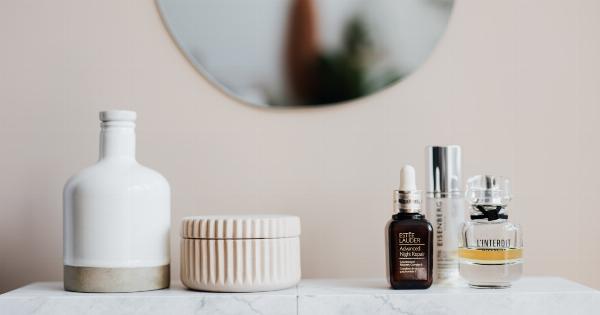Are you tired of dull and aging skin? You are not alone. Many people have experienced a loss of radiance and elasticity as they age. But don’t worry! There are many products that can help you achieve youthful-looking skin.
Two effective ingredients that can transform your skin are niacinamide and glycolic acid.
What is Niacinamide?
Niacinamide, also known as vitamin B3, is a water-soluble vitamin that is often used in skincare products. It has many benefits for the skin, including improving the skin barrier, reducing inflammation, and regulating oil production.
Niacinamide is also an effective skin brightener, making it perfect for those looking to achieve a youthful glow.
What is Glycolic Acid?
Glycolic acid is an alpha-hydroxy acid (AHA) that is derived from sugar cane. It is a popular ingredient in many anti-aging products because of its ability to exfoliate the skin and stimulate collagen production.
Glycolic acid can also help to reduce the appearance of fine lines, wrinkles, and age spots.
The Benefits of Niacinamide and Glycolic Acid Together
While each of these ingredients has its own benefits, using them together in a skincare routine can help to maximize their effectiveness. When combined, niacinamide and glycolic acid can:.
- Improve skin texture and tone
- Reduce the appearance of fine lines and wrinkles
- Brighten the skin
- Reduce hyperpigmentation and discoloration
- Minimize pores
How to Incorporate Niacinamide and Glycolic Acid into Your Skincare Routine
If you want to experience the benefits of niacinamide and glycolic acid, you can incorporate them into your skincare routine in a few different ways. Here are a few options:.
Use a Niacinamide Serum
If you are new to using niacinamide, you may want to start with a serum. Serums are lightweight and easy to apply, and they can be used on their own or layered under a moisturizer.
Look for a serum that has niacinamide as one of the main ingredients, such as The Ordinary Niacinamide 10% + Zinc 1% serum.
Try a Glycolic Acid Toner
Glycolic acid toners are another popular way to incorporate this ingredient into your routine. Toners can help to remove excess oil and dead skin cells, leaving your skin feeling smooth and refreshed.
Look for a toner that has a concentration of around 5-10% glycolic acid, such as the Pixi Glow Tonic.
Use a Moisturizer with Both Ingredients
If you want to simplify your routine, you can look for a moisturizer that contains both niacinamide and glycolic acid. This can help to streamline your skincare routine while still providing the benefits of both ingredients.
A good option is the Olay Regenerist Retinol 24 Night Moisturizer, which contains both niacinamide and glycolic acid.
Tips for Using Niacinamide and Glycolic Acid
To get the most out of niacinamide and glycolic acid, there are a few tips you should keep in mind:.
- Start slowly. If you are new to these ingredients, it’s best to start with a low concentration and build up gradually.
- Use sunscreen. Both niacinamide and glycolic acid can make your skin more sensitive to the sun, so it’s important to use a broad-spectrum sunscreen every day.
- Be consistent. To see the best results, you should use these ingredients consistently over time.
- Avoid using with other exfoliants. Using niacinamide and glycolic acid with other exfoliants, such as salicylic acid or retinol, can cause irritation and damage to your skin.
The Bottom Line
Niacinamide and glycolic acid are two powerful ingredients that can transform your skin. By incorporating these ingredients into your skincare routine, you can achieve a brighter, smoother, more youthful-looking complexion.
























